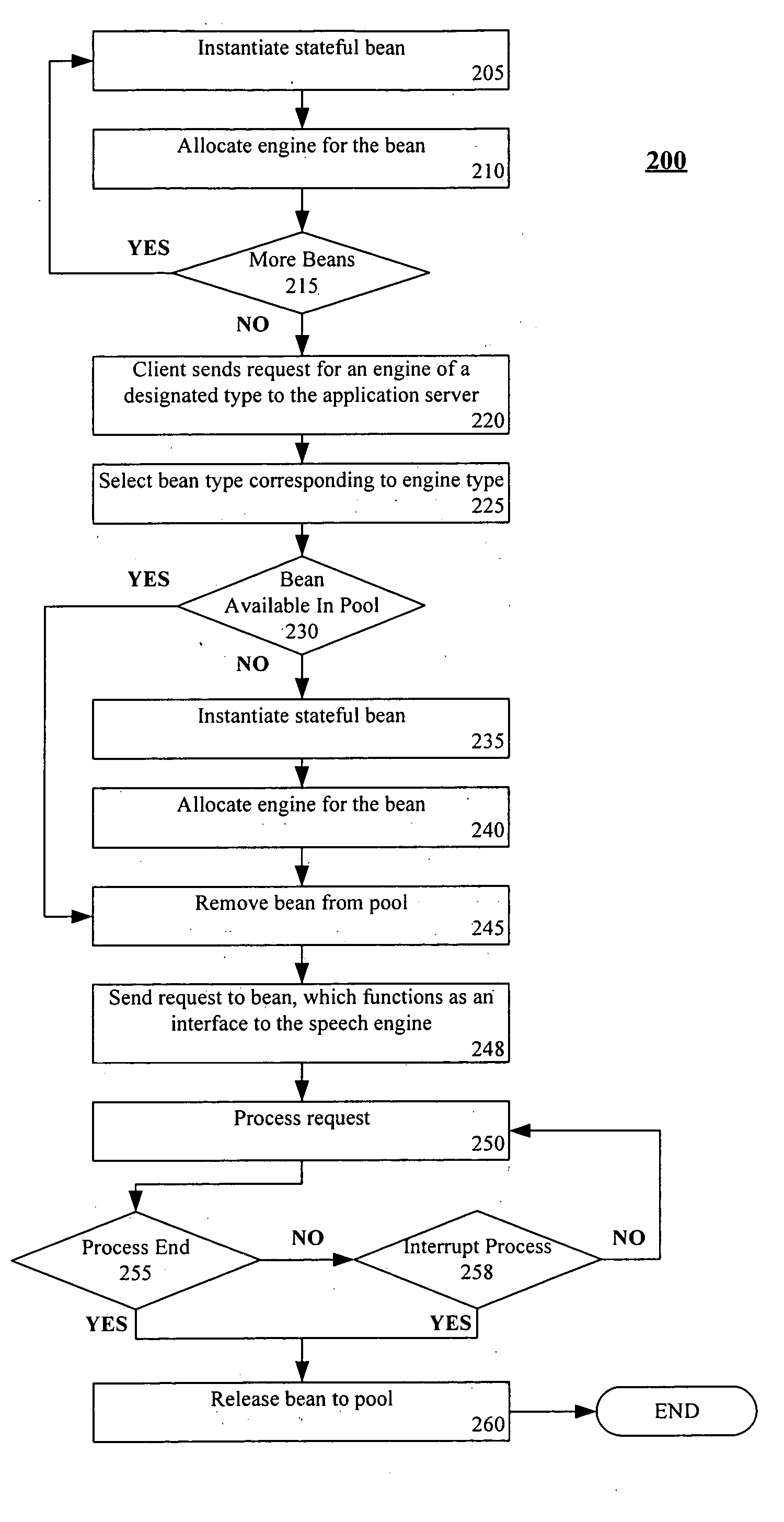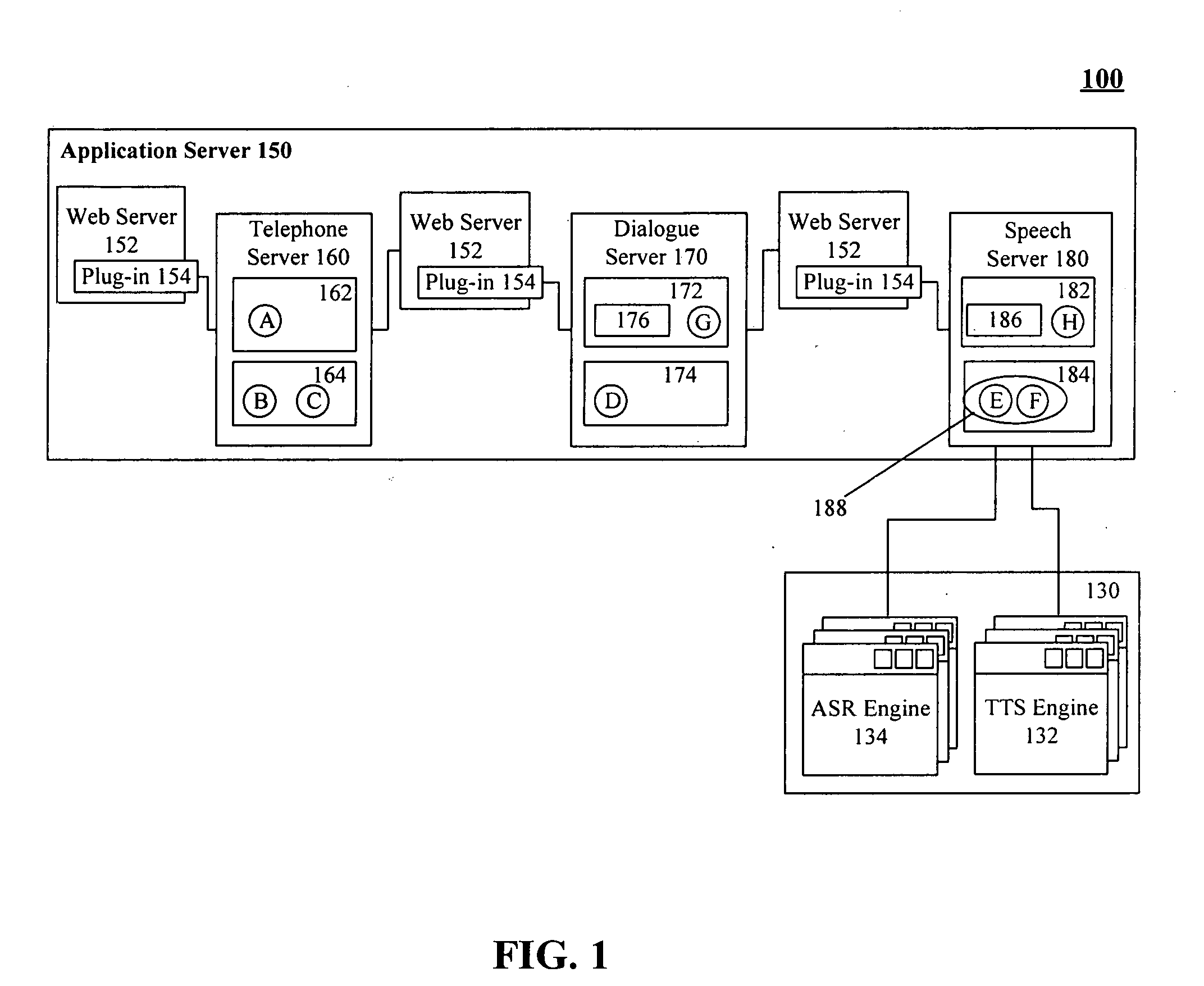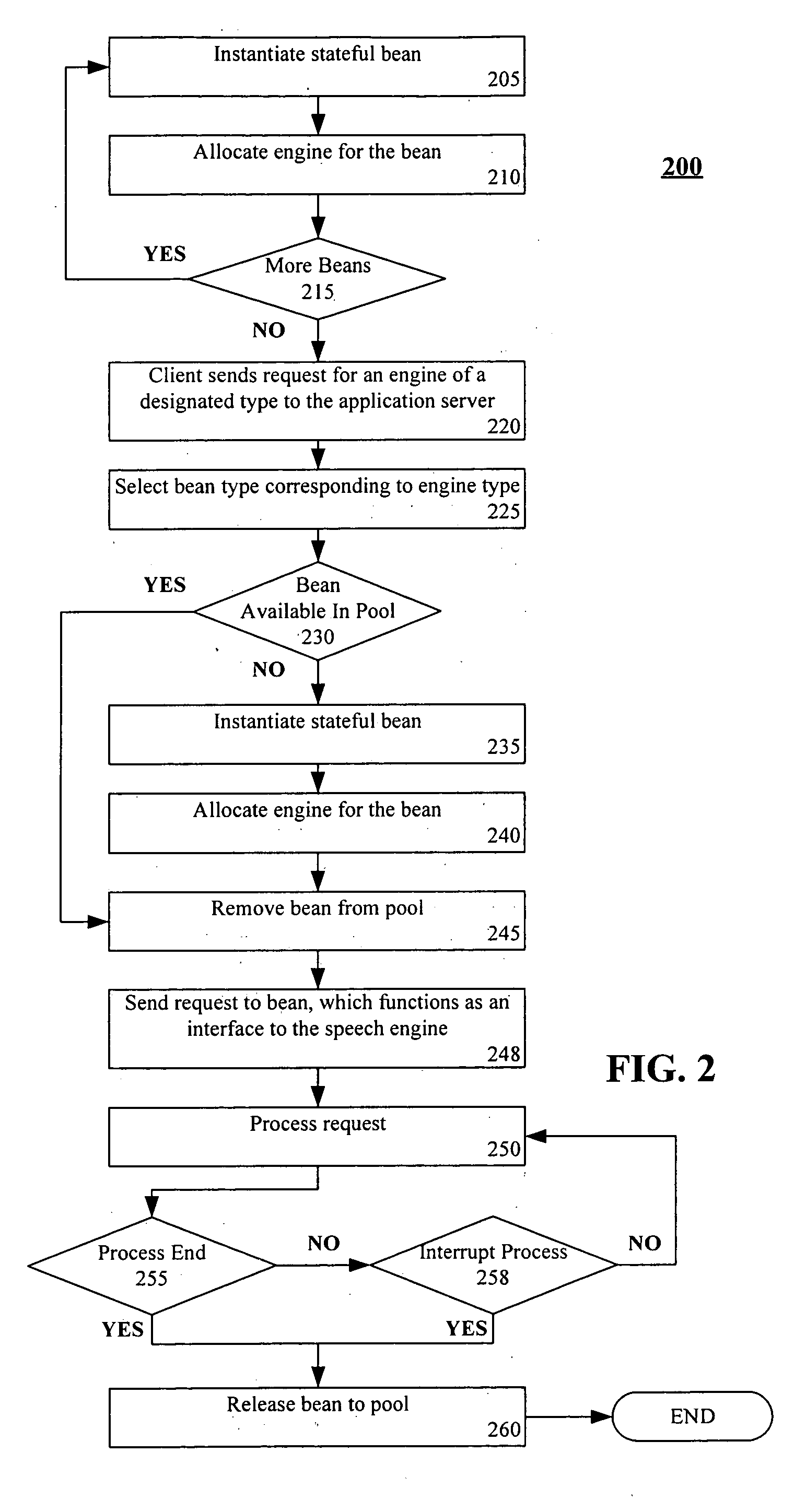Pooling stateful session enterprise JAVA beans for reuse
a stateful session and enterprise java bean technology, applied in the field of computer software, can solve problems such as inability to meet the requirements of the application, experience a performance lag, and delay in program execution, and achieve the effect of avoiding the associated performance latencies
- Summary
- Abstract
- Description
- Claims
- Application Information
AI Technical Summary
Benefits of technology
Problems solved by technology
Method used
Image
Examples
Embodiment Construction
[0018] The present invention discloses a technique for pre-loading a multitude of stateful session EJBs into an EJB container, thereby establishing a “free” pool of available stateful session EJBs. Each of the stateful session EJBs can be used as an interface between an application server and a remote resource. When a process triggered by the interface bean is running, the stateful session EJB can be removed from the pool and considered unavailable. When the process within the remote resource has finished or is terminated, the stateful session EJB can be released back to the pool, thereby making the EJB available for handling other request.
[0019] The preloading technique alleviates the problem of performance latency typically suffered when instantiating a new EJB. The performance latency normally results from initial set-up costs for instantiating EJBs, initializing a remote resource, and / or establishing communications between the EJBs and the associated resource. In embodiments wh...
PUM
 Login to View More
Login to View More Abstract
Description
Claims
Application Information
 Login to View More
Login to View More - R&D
- Intellectual Property
- Life Sciences
- Materials
- Tech Scout
- Unparalleled Data Quality
- Higher Quality Content
- 60% Fewer Hallucinations
Browse by: Latest US Patents, China's latest patents, Technical Efficacy Thesaurus, Application Domain, Technology Topic, Popular Technical Reports.
© 2025 PatSnap. All rights reserved.Legal|Privacy policy|Modern Slavery Act Transparency Statement|Sitemap|About US| Contact US: help@patsnap.com



